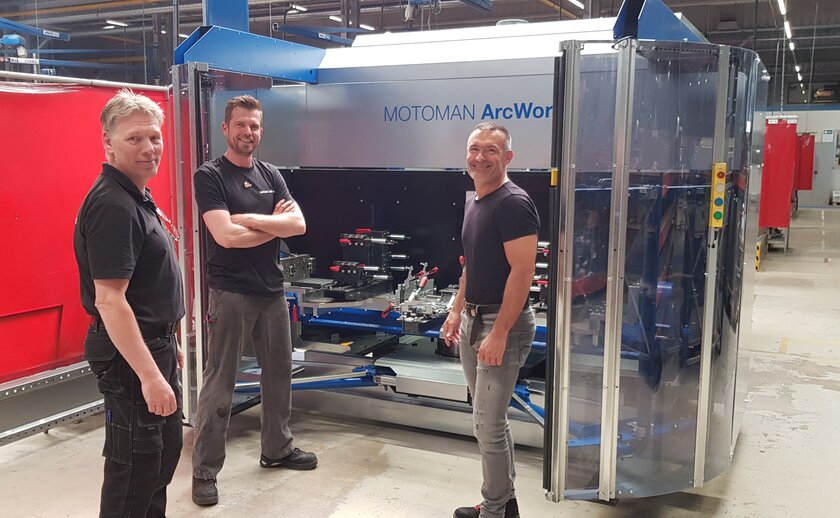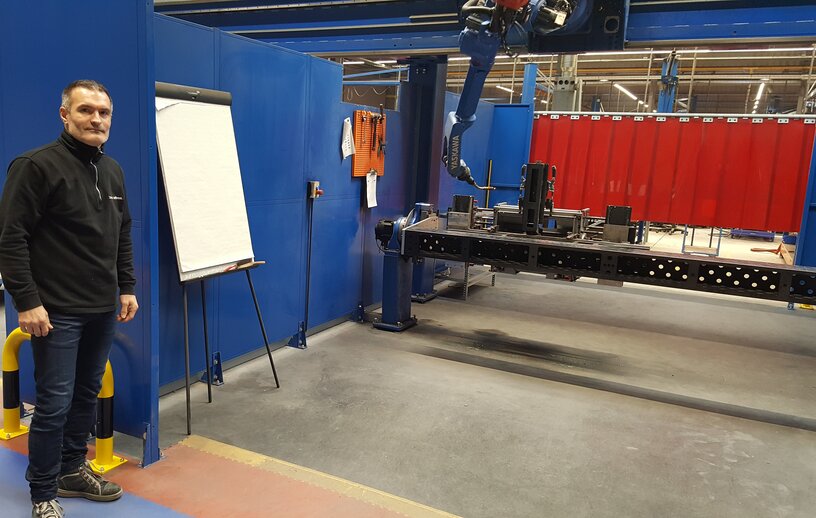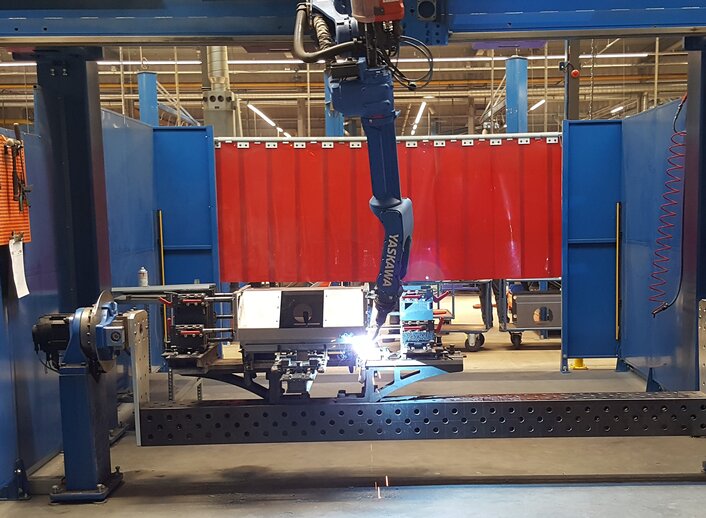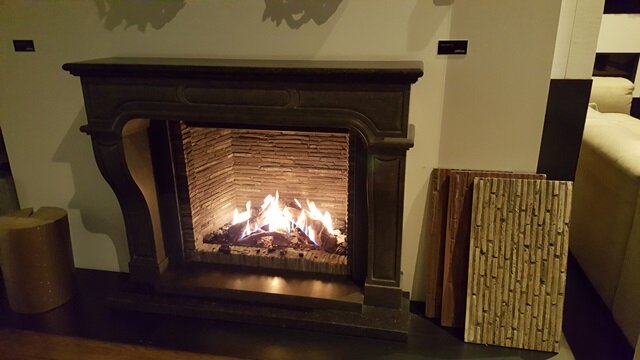Our industry-leading, high-speed industrial robots include high-payload, extended-reach, ultra-maneuverable seven-axis and unique 15-axis dual-arm robots.
Barbas Bellfires is futureproof
With a view to the future, a conscious choice was made in 2019 at Barbas Bellfires for a first welding robot to get a better flow. The throughput speed and quality of the welding were improved to such an extent that a second installation, an ArcWorld robot welding cell, was added at the end of April 2020.
Barbas Bellfires is a warm, Kempen family business that also makes a beautiful, warm product. Based in Bladel in the Brabantse Kempen, Barbas Bellfires has been a producer of gas and wood stoves and fireplaces for 35 years. These are made completely in-house by the 160 employees. The company actually has two brands: Barbas and Bellfires. Originally it was Barbas and Bellfires later took it over.
Everything in-house
At Barbas Bellfires, between 15.00 and 16.000 stoves are produced annually, everything being done in-house. Mark Spijkers, Operations Manager explains: “We do everything completely ourselves. There is an R&D department, internal and external sales, purchasing, business office and production; which consists of cutting steel, bending steel, welding steel, complete wet coating installation, prefab assembly, mounting and shipping, the complete range in-house. ” This is where the two product lines are made from start to finish, gas and wood stoves, currently 65% gas and 35% wood. The home market is mainly the Benelux: 35% of the products goes to Dutch customers, 35% to Belgium and 30% is export.
- Endüstriler
- Metal İşleme Çözümlerimiz
- uygulamalar
- Arc Welding
Fast market
The company started a project 14 years ago (in 2006). Previously everything was produced in stock. Obviously, it is a fairly seasonal product, with winters being a lot busier than summers. “We used to keep running full steam ahead in the summer months to have enough stock, which was then delivered from the forwarding warehouse. That was possible then because the market was not yet that fast, nowadays the market is so fast. Everyone must have the latest products right away,” says Spijkers. "So if you fill up your warehouse in the summer, you just have to see if you can empty it again in the winter."
Before 2006, a lot of production took place in low-wage countries, such as cutting, bending and welding of steel. This was accompanied by long lead times, with full trucks coming to Bladel with contents of which the quality sometimes caused major problems. The first step was to move from production in low-wage countries to the region, which made the process a lot more transparent. However, most suppliers work in series while the customers of Barbas Bellfires have so many different wishes.
The problem of production in low-wage countries plus the desire for order-driven production made the company decide 12-13 years ago to slowly bring back production in-house. They started investing in press brakes for steel bending and then in a laser for cutting. “These first steps already gave so much more scope, so much more knowledge of the products, so much more improvement potential and profitability improvement that it was logical to continue investing,” says Spijkers. "If you look now, there are nine press brakes and four lasers running here."
Godsend
After cutting and bending, the next step in the process is welding. The welding shop has been included in the improvement process for two years now. Part of this different way of working was therefore also to invest in the welding shop, more specifically in a first welding robot, whereby Yaskawa was chosen. In the past, welding was done manually, but at least two or three suppliers welded hulls with robots, so Barbas Bellfires felt they able to do that themselves too. The first welding robot portal is quite large for a relatively small product. The company philosophy immediately becomes clear here: everything is aimed at flow, robot is loaded on one side, and unloaded on the other. There is one-way traffic throughout the factory.
The second robot was a Yaskawa ArcWorld welding cell, the largest size. The company first looked at a small welding cell, but ultimately a few sizes larger were chosen, which offers much more flexibility for a small price difference. Small parts but also hulls can be welded here.
“The robots are a godsend because it is so difficult to find good welders,” says Mark Spijkers. “And yet we employ just as many welders as before. Our most experienced welders are trained as robot programmers, but a robot operator does not have to be a welder. ” The welding shop has consisted of more than 25 employees for years, but because of the insourcing thanks to the welding robots, much more can be produced with these welders. Production is really done in single pieces, only what has to go to the paint shop for painting, on customer order. The welding robots offer many advantages: a welding robot is never ill, is always there, always welds, always delivers the same quality and ultimately gives some capacity expansion to insource more welding work.
Improvement potential is tapped
They do have simple parts from which a hull is built up in stock in the welding shop, otherwise a hull can never be built so quickly. “If you develop, bend, cut everything yourself, you have everything under control. Everything is developed here, so when the product developer is working on a new product and the prototype is being built, a conversation immediately starts between the developer and the laser operator, the welder, the press brake operator. So they exchange ideas and improvement potential is tapped. The effect of this is enormous. Improvements can be implemented immediately along the way,” says Spijkers enthusiastically.
Despite the automation step that Barbas Bellfires is taking, they don't need fewer people but the mechanization makes the work more pleasant. The company is always looking for professionals. “A robot, laser, press brake doesn't make the difference; the people who operate or program the machine make the difference, ”says Mark Spijkers. “Yaskawa does this very well in the preliminary phase by saying: we can place as many robots here as you want, but that is only the beginning. You have to learn to work with that robot. It takes months until you have taken those steps. Other quality requirements are also set for bending and cutting if the robot is to function properly. If this is pointed out very carefully during the preliminary phase, you will not be surprised. You must not think, I am installing an expensive machine and I have no problem anymore, that is not true. With our very first laser, it took us months to learn how to use it. The latest laser was installed and was immediately productive. ”























